Have you ever thought about how weddings are celebrated in the rest of the world? Italian habits and customs are deeply rooted in centuries-old traditions, but it would be interesting to find out about particular traditions of other countries, such as lucky days to get married, what the bride must wear, and many more.
The most diffused form of union between a man and a woman in our country is the catholic wedding, celebrated in church. It is no small thing. Wedding is one of the seven sacraments, fulfilment of life for many devotees. Besides the choice to share our existence with someone else, the catholic wedding implies the birth of a connection consecrated by Christ, and as such, it is sacred and unbreakable. Woe to taking such step lightly. Especially nowadays, where a more dynamic and open lifestyle sometimes gives us the impression that nothing lasts forever, there is the need for a strong acknowledgement before making such an important choice.
That is why those who want to get married in church need to attend a marriage preparation course, which helps the future couples to understand if they are really ready to tie the knot. But the marriage preparation course is just one of the duties that the church imposes to those who want to celebrate their religious wedding. Both spouses need to satisfy some essential requirements, and collect documents that state the truthfulness of their status.
First of all, both need to be baptized and have received confirmation. Without those two sacraments in fact, it would not even be possible to say they belong to the Church. They can request their baptism and confirmation documents to the church they attended at the time. Furthermore, they must not be divorced, that is, they must not have already got married in church to someone they later divorced. For divorced people there is no possibility for a second catholic marriage, but only civil union, unless they obtain the annulment from the Sacred Roman Rota before the wedding. Widows and widowers can instead have a second marriage in church.
Many documents are also necessary, and they need to be collected ahead. Besides the already mentioned certificates of baptism and confirmation, all the documents necessary for a civil marriage are needed: birth certificates, residence certificates, citizenship certificates. More, for a religious wedding the spouses will need to present a statement of freedom to marry, which states that the person requesting it has never been married before; the certificate of completion of a marriage preparation course; the church clearance statement, needed only in case the spouses want to get married in a different parish that theirs or outside their residence district.
To be clear, getting married in church is not only an annoying collection of paperwork and fulfilment of the above-mentioned requirements. A religious wedding is the successful completion of a shared path of love and human growth, the prelude to the birth of a new family, and as such, a reason for great joy for the spouses and for those who love them. An occasion for celebration then, to be shared with the beloved ones, eating, toasting and dancing.
Many are the Italian habits connected to the day of the wedding. Let’s begin by saying who has to pay, more or less symbolically, for it. According to the tradition, the groom has to buy the bouquet, as his last gift as fiancée, and have it delivered to the bride’s house on the morning of the wedding. The bride has to throw it at the end of the ceremony, so that her unmarried friends can try to catch it and, according to the story, be the next in line to get married. A more recent tradition says that the mother-in-law should buy the bouquet, as well as the bridal veil, and that she also adjust it according to the future daughter-in-law’s hairdo. About the bridal veil, it should be one meter long for each year of engagement!
The wedding gown instead, as the entire trousseau, are at the expense of the bride’s family. Throughout time, many superstitions were born concerning this particular aspect of Italian weddings. The groom must not see the gown before the due day, but even the bride should not look at herself in the mirror wearing the gown before then, unless she takes off one shoe, one earring or one glove. The traditional color of the bridal gown is white, even though in the last few years many other colors have spread, even unusual ones. But you need to be careful, some colors are bad luck! Ivory is an omen of disarray in the couple’s life; pink of big financial problems; red can even be an omen for death! On the contrary, blue means truthfulness, green means shyness, and black means regret… even if a marriage celebrated when there is regret is definitely not a great start! Guests, on their side, should avoid black and white in their dresses for the ceremony. It’s not over here. If the bridal gown is white, then the bride must wear something blue, as we mentioned as symbol of truthfulness, but also purity; she needs to wear something old, to symbolize the unmarried life left behind; something new, to represent the new life coming; something given, which stands for the love of her dearest ones; and something borrowed, to remind the connection with her family.
We were talking about who buys what… According to traditions, the groom’s family must buy the house, the furniture (except the bedroom), the groom’s dress, the wedding rings and must pay for the honeymoon. What is left, that is the trousseau, invitations, flowers and so on, are at the expense of the bride’s family. This rule was obviously very strict in the past, but now there are many different options. Times have changed, the spouses pay for their wedding most of the times, or anyway families split the expenses according to their actual availability.
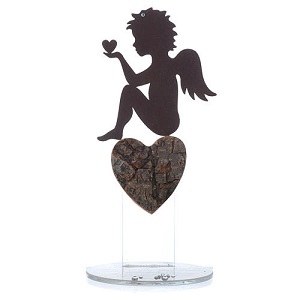
The sacred party favors for the wedding cannot be missed. They were small boxes to contain sweets, and were very popular among noble women since 1600; in Italy, they became part of the wedding trousseau since 1700, when Vittorio Emanuele, prince of Naples, and Elena of Montenegro offered them as thank you gift to all the guests who attended the celebrations for their wedding. They must be the same for each guest, and they are usually made of crystal, silver, limoges, even though today party favors made of other materials, maybe fair-trade, are very popular. The party favor must contain an odd number of sugared almonds, no fewer than five. Why this number? To guarantee that the spouses good health, fertility, long life, happiness and wealth.
Concerning the lucky days to get married, we should listen to the popular old adage that says that you should not marry, leave or begin art on Friday nor Tuesday, because you risk not finishing it. Propitious days are Monday, dedicated to the moon and therefore to brides, and Wednesday, considered a very lucky day. Today young couples tend not to follow such superstitions, but the work commitments of all guests result in celebrating most of the weddings on Saturday or Sunday. Careful: according to superstitions, Saturday is considered the most unlucky day to get married! About the month, January guarantees love, kindness and faithfulness; February is the triumph of love; March is bringer of joy, but also pains; April only promises good things; May is unlucky; June brings the spouses under Juno’s protection, the goddess of weddings; July brings financial problems; August is a prelude to an instable life, full of changes; September brings prosperity and joy; October guarantees a lot of love but not much money; November brings joy and happiness; December is a guarantee of an eternal and safe love.
Many other habits and superstitions connected to weddings have ancient and curious origins. For example, the presence of the bridesmaids around the bride is said to have Egyptian origins. In fact, in the ancient Egyptian society, the bride’s friends surrounded her to protect her against evil spirits. Another habit against evil spirits is to accompany the wedding procession with loud noises, such as trumpets and car horns, while throwing rice to the couple exiting the church brings fertility and wealth. The tradition of throwing rice was probably born in China: a good genie, moved to pity by the suffering of many citizens during a famine, pulled out all of his teeth and threw them in a swamp, where they became seeds and gave life to plants whose fruits were as white as teeth. Since then, rice has become a symbol of wealth.
And the wedding rings? The groom is in charge of buying them, and must be worn on the left ring finger, where, according to ancient Egyptian traditions, a vein directly connected to the heart flows, and therefore privileged channel for feelings. Wedding rings are called also “vere” in Italian (true, real), synonym of faithfulness. If, unluckily, a wedding ring should fall on the floor during the ritual, only the officer can bend over to pick it up, or an immense bad luck will fall upon the spouses.
One last fact: the groom’s tie and the bride’s garter. Cutting the groom’s tie and distribute the pieces among the male guests demand a money offer in exchange. The garter instead, recalls for an ancient habit according to which the groom’s friends that are still unmarried should steal the bride’s garter and wear it on their hats. Today the groom throws the bride’s garter or her right shoe.
Let’s take a look at what happens in the rest of the world.
Every country, every culture, is different form the others in many aspects. Even concerning the celebration of a wedding, we find weird habits throughout the world: some are really bizarre and incomprehensible for us, while others are not that far away from our concepts. Let’s examine some of them.
In India, weddings follow the Hindu ritual. Or better, the rituals, since there are at least 11 different types of wedding rituals, according to the religion. The only common element is the color of the bridal gown, which must be red. In fact, red symbolizes fertility and wealth for Indians. The bride is lavishly adorned and, besides jewels and accessories, her hands are adorned with elegant arabesques painted with henna. They also hide an enigma: among the complicated quibbles, the initial letter of the groom’s name is hidden. If he will be good enough to find it, he will show that he will be a good head of the family! Indian spouses are carried to the altar sitting on a throne under a rain of yellow flowers. Weddings are mainly celebrated in October, considered a propitious month because the Good forces win over Evil forces.
Also in Iran the spouses sit on a throne. A silk veil is laid out on their heads, upon which a woman crumbles two sugar cones. After the ceremony, the spouses must utter their wedding vows looking at themselves reflected in a big mirror, which will guarantee light and brightness to their future.
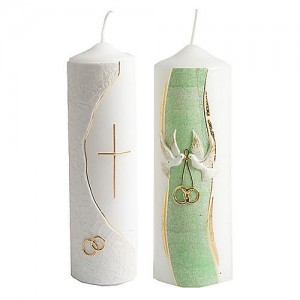
In the Jewish wedding, guests carry the groom and the bride on their shoulders, and they will try to kiss while others sing and dance. If they succeed, their union will be prosperous and happy, and they will be able to overcome any obstacle together! The bride’s family takes her to the groom’s house, and after to the chuppah, the wedding canopy, usually holding lit candles in their hands. The rabbi recites a sermon and blesses the wine in a chalice, which is then offered to the spouses, who drink and exchange rings. After reading the marriage contract, the rabbi utters the seven blessings that will protect the wedding. That is done above a second chalice, which, in the end, is put on the floor by the groom and broken with a kick. This curious gesture is to recall the destruction of the Temple of Jerusalem, and the ousting of the Jews from the Holy Land.
In Morocco the spouses exchange a date, symbol of fertility and wealth, and the bride is immerged in a milk bath with her friends to be purified, while in Greece a sugar cube is put inside the bride’s glove, so that she won’t lose her sweetness. In Greece, spouses enter the church holding white candles and join hands once they’ve reached the altar, to symbolize the union of their souls.
In Russia as well the spouses take candles to the altar, and they must keep them lit for the whole ritual. The bride, until recently, should wear blue.
In Scandinavian countries there are many curious habits. In Sweden the groom cannot go to the bathroom during the reception, or the other male guests might kiss his wife! The bride carries a golden coin, given by her mother, in her right shoe, and a silver coin, given by her father, in her left shoe, to guarantee wealth and luck. In Finland the bride goes on her own to pick up the wedding gifts at the guests’ homes, joined by an old man. She can choose to get married in a house made of ice and get there on a reindeer sleigh. In Denmark the groom and the bride exchange clothes to confuse evil spirits. Both the groom and the bride must be careful: during the dinner, every time the bride leaves the room, all other women run to kiss the groom, and so do all men with the bride when the groom is away!
What happens in the East? In China the bride is carried around is a sedan and keeps silent through all the day of her wedding. Since white is the color of mourning in China, no bride will ever wear anything white on her happiest day, nor will she wear blue or grey, other colors associated to sadness. Red, on the contrary, which stands for fortune and wealth, is the most popular. The Chinese wedding has its peak with the tea ceremony. There is a morbid habit that concerns the dead: since in China it is believed that if a man dies young and unmarried he is doomed to be alone for eternity, sometimes his relatives organize a wedding between deceased people. In Japan, grooms often wear colorful kimonos and the brides wear a white cloth, to symbolize her will not to be jealous. Before the ceremony, both the groom and his closest guests perform a purification ritual with the water coming from the fountains outside every temple. During the ceremony, the spouses must drink three small sips of sake from three different cups. In Thailand, some monks used to purify the spouses a few days before their wedding by making them bath in the holy water. Today it is enough to make them wash their hands and heads in a basin. The same water is then used the day after: the guests must pour some in the spouses’ hands to sanction their wedding.

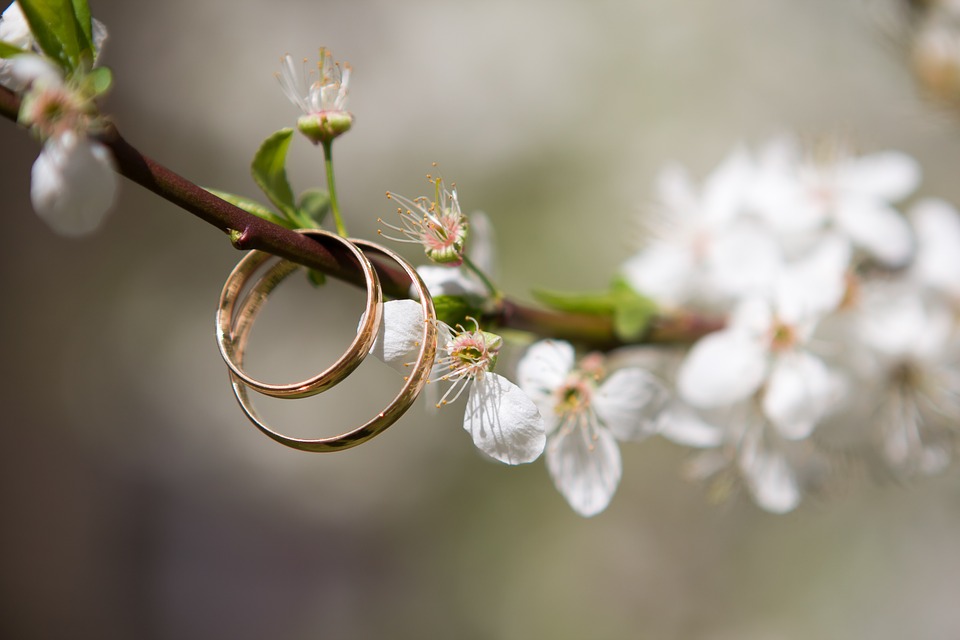

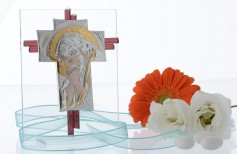

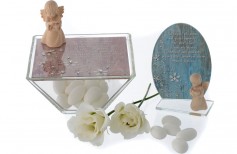


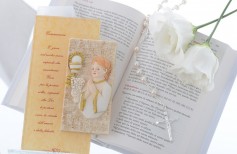










 19 March 2025
19 March 2025






